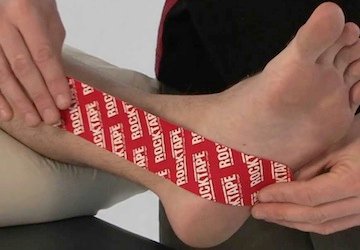Pain within the heel and arch is one of the most common biomechanical problems presented to podiatrists. Although often diagnosed simply as plantarfasciitis, a number of other conditions that are both chronic & acute in nature can be the source of pain in this region.
These include:
- trigger points (muscular knots) in the small muscles within the foot
- inflammation and/or damage to the fat pad under the heel bone
- nerve entrapment under the heel bone
- tear or rupture of the plantarfascia
- tendonitis of larger leg muscles whose tendons run into the foot
- ligamentous strain and bony malalignment within the arch

In saying that, plantarfasciitis does seem to be the more common source of heel and arch pain. The plantarfascia, as the name might suggest is made up of fascial tissue. This is different in biological composition to tendons and ligaments. Pain within the plantarfacia may occur where it attachs to the heel bone (heel spur syndrome) or in the body of the fascial tissue under the arch. Common causes of this condition:
- flat foot
- high arched foot
- sudden increase in frequency, intensity or time dedicated to exercise
- worn out sports shoes
- prolonged barefoot walking on hard artificial surfaces
- thongs
- tightness of nearby leg muscles
- weakness of nearby leg muscles
- ligamentous laxity (looseness)
- occupation (prolonged standing on artificial surfaces)
For treatment of plantarfaciitis to be successful the podiatrist after diagnosis must address the cause. This can be undertaken through the following methods:
- traditional sports tape
- Rock Tape
- static stretches
- dynamic range of motion stretches

- post isometric stretches
- strengthening of appropriate muscles
- foot mobilisations
- dry needling of trigger points
- replacing worn out shoes
- footwear modifications
- training advice (frequency,intensity,time)
- orthotics

